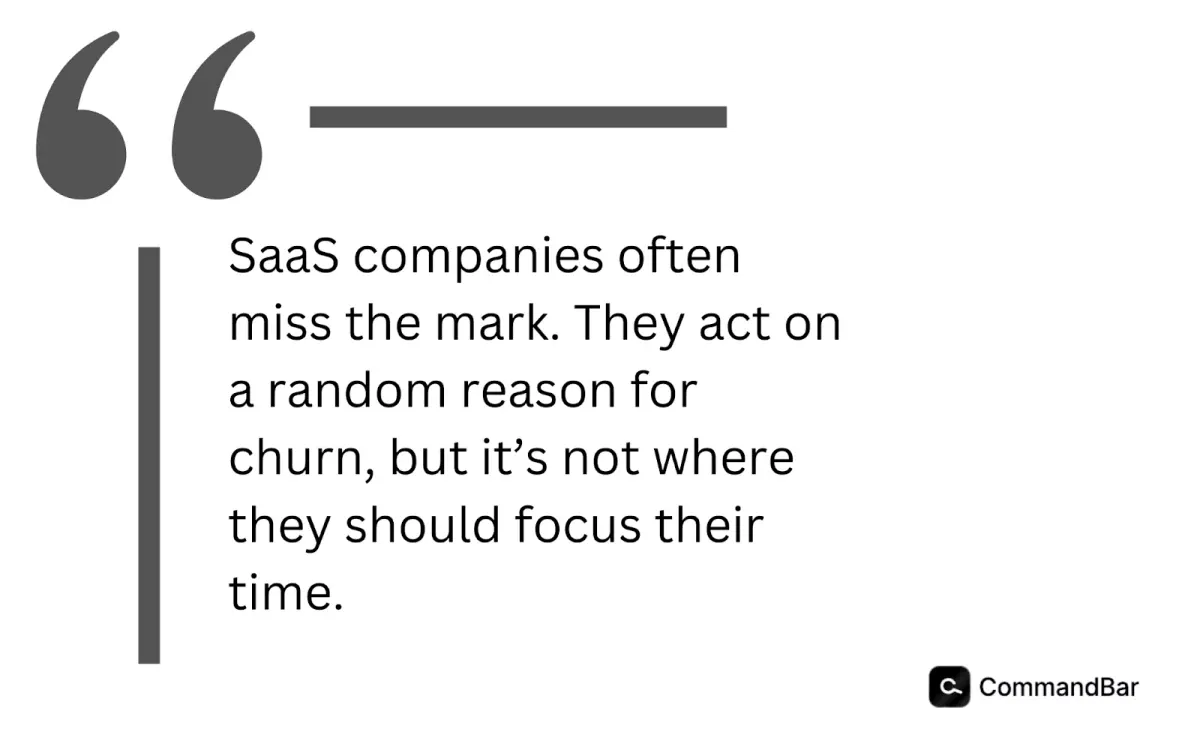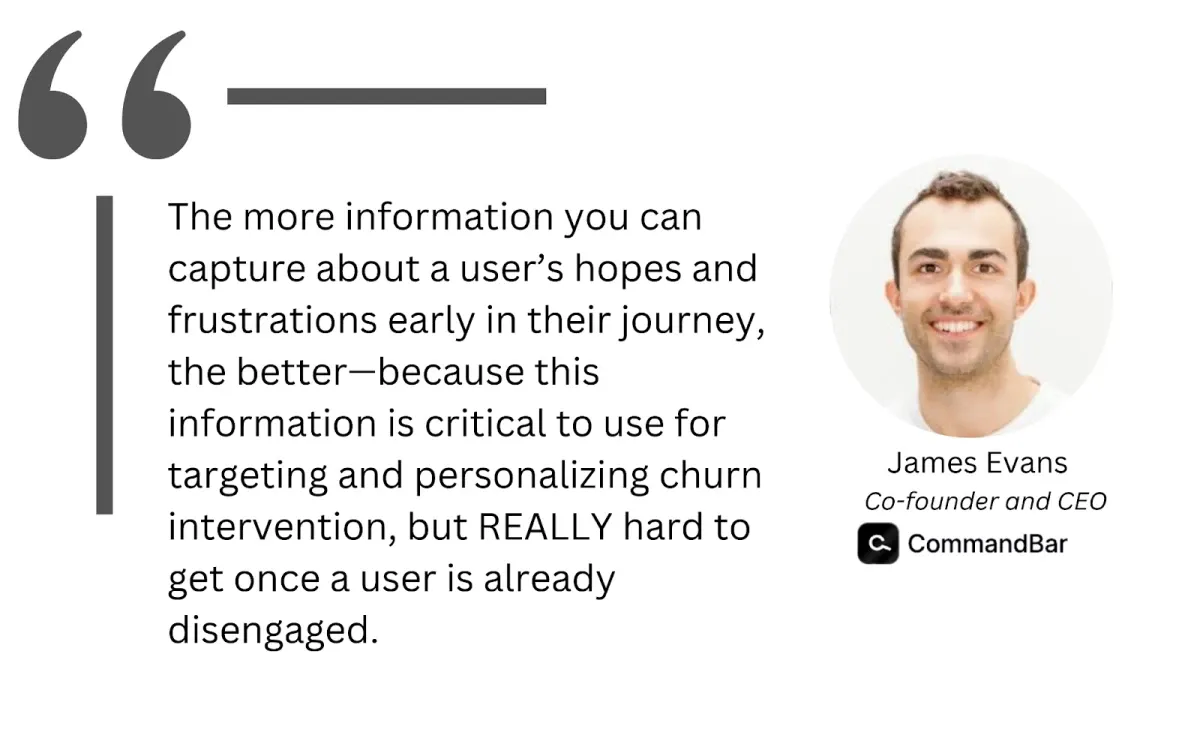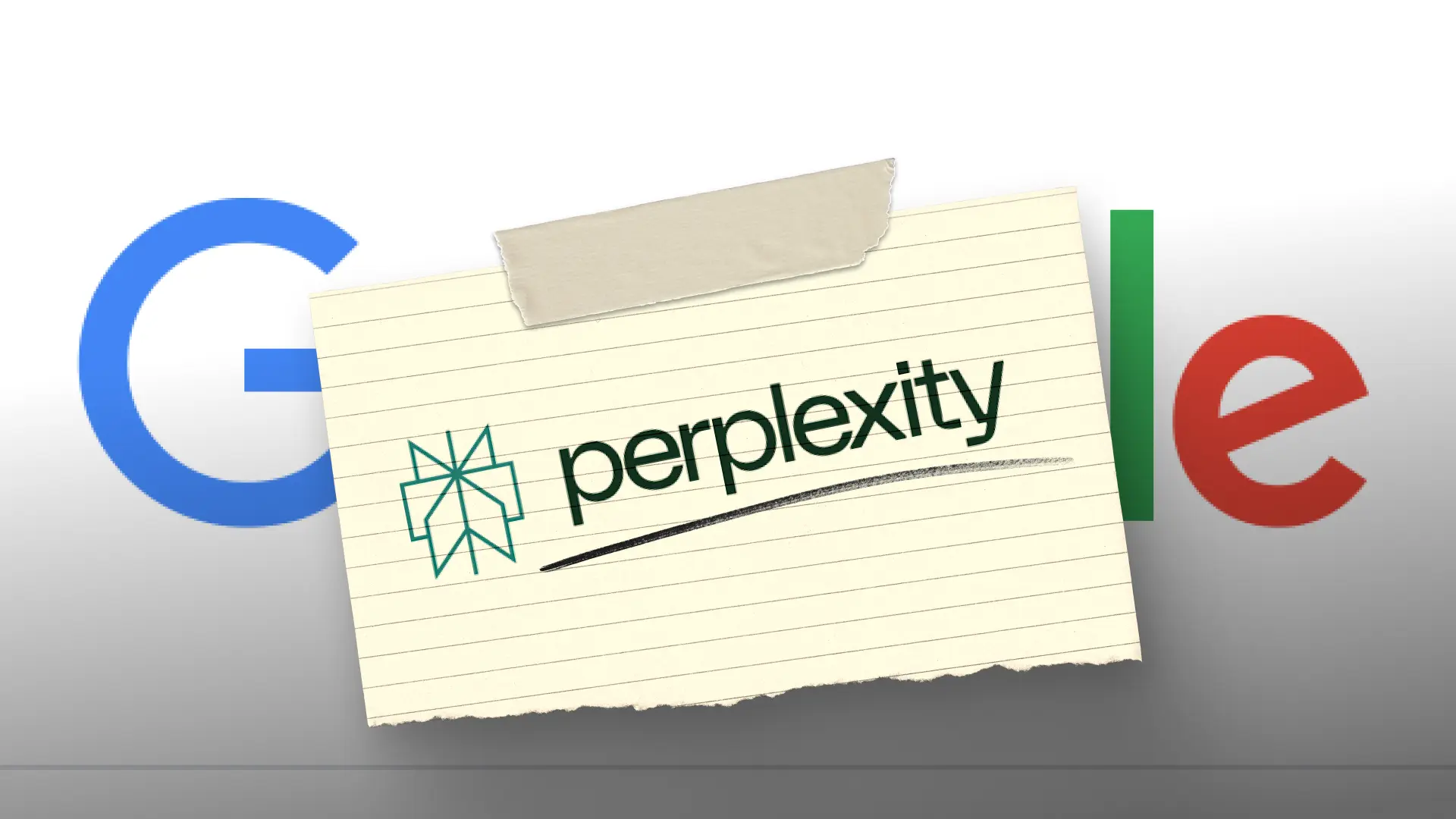The first time an adventure-seeker experiences something new, like skydiving, the adrenaline is life-changing.
The second time, it’s amazing!
The third time—well, maybe it’s time for something new.
Nothing lasts forever, even the most exciting experiences. That’s why it’s important to recognize red flags and constantly reengage with customers to keep them satisfied.
When new users try your app, they come in with big expectations. You’re on the right track if you get them to the customer activation stage. But after a while, you start noticing a drop in feature usage. Eventually, they begin to disengage (and it’s challenging to recover from that point on). And before you know it, they’ve churned.
Churn is the enemy of growth.
It’s like Cinderella trying to get to the ball, but her stepmother blocks her every move to ensure she doesn’t win.
And while high churn is bad for you as a SaaS leader, it’s even worse for the user. It’s the sign of unmet promises, frustrating experiences, and the ultimate letdown.
But here’s the mic drop: It’s too late to solve churn that’s already happened.
Once your users churn, sure, there are some things to learn and steps to recoup some of your lost customers. But realistically, you’ve lost their trust.
You’ve broken the relationship, and they ain’t coming back.
But wait! Let’s pick up the mic again and turn up the volume.
Here’s the good news: If you can learn to recognize what causes churn and prevent it in the first place, you’ll increase customer retention and user satisfaction. Not only that, but you’ll also grow your app, increase revenue, and build better customer relationships.
It’s possible to eliminate poor churn rates even when it seems impossible (at CommandBar, we even reached zero churn). It starts by understanding the who, why, and how of the churn rate equation—then it’s smooth sailing.
Once you get churn reduction down, the only churn that’ll be on your mind is as a tourist churning homemade ice cream in rural Pennsylvania.

Yeah, but what’s the math: Calculating churn rate for SaaS
The churn rate is the percentage of customers or subscribers who no longer pay for your service within a defined period. The rate helps SaaS companies understand platform health and find areas for improvement.
The customer churn rate formula is:
(Your lost subscribers / Total subscribers) x 100

While knowing your churn rate is essential, the number won’t help you. Plus, it’s already happened. It’s like you checking your bank account and seeing it’s in overdraft—uh, now what?
You need to identify the WHY behind your churn and how to improve.
Why churn matters, and how it hurts your business
Poor churn rates are a definitive sign that a company is in trouble. In virtually every industry, repeat customers are the best indicator of a company’s future and health. This is even more critical for SaaS.
SaaS companies depend on monthly recurring revenue, and if the customer retention rate is low, a business cannot expect to scale in the current trend.
If your churn rate is high but you’re still profitable and growing, you should still work on improving it. Like that one neighbor in his rocking chair who talks like Socrates says, “If you’re not moving forward, you’re going backward.” You risk backsliding and getting worse when you’re not paying attention to churn and are instead focused on continuously improving.
That’s why you constantly work toward improvement, no matter the stage or health of your company.
If you can knock off half a percentage point or more, you could make thousands or more in additional revenue. Often, one small but insightful change makes all the difference.
But knowing your churn state and doing something about it are two very different things.
The actual reason for churn
Nobody wants to see a lousy churn rate in their SaaS dashboard. Once you know it’s a problem, it’s in the back of your head during any decision you make about your business. And it makes sense. It’s a big red flag and spells trouble for your app.
So when we see a churn rate that needs improvement, we want to fix it faster than a pit crew changing a bad tire during a NASCAR race.
But in the heat of the moment and desire for improvement, B2B SaaS companies often miss the mark. They act on a random reason for churn, but it’s not where they should focus their time.
Companies should focus on different customer segments through techniques like cohort analysis and study churn habits. Segmentation also helps because you can reengage users with the specific use cases and help they need for their customer persona rather than a generalized hit-or-miss approach.
Unfortunately, a failed churn reduction approach often comes down to timing. Companies acted too late. If they notice a churn problem that’s developed in the last few weeks, they’ve already lost users forever. That’s why taking the offensive (and targeting each user segment) is the safest and surest way to churn reduction.

Before reduction happens, or at the very least when you notice it, you must identify the many reasons for churn.
It’s possible the new customers may not be a good fit for your app and you’re attracting the wrong audience. If this is what’s happening, that’s a marketing problem, not a product problem.
Or, your product is missing much-needed features and new users look at other apps to solve their problems. Or maybe you have poor customer support when users need help.
The actual reason for churn will always come down to user frustration, lack of perceived value, and poor engagement. Once you can identify the root causes for your unique churn (more on that soon), you can improve customer satisfaction on the right footing.
Market fit vs. product fit: how they differ and why they complement one another
How can you distinguish between a market issue and a product issue?
You see it especially with startups still trying to figure out their product. They mix up product problems with market problems, making improving their brand and success harder.
For example, regarding churn: If customers feel you lack a key feature, that sounds like a product problem. In another scenario, if a group of customers needs an integration for a niche-specific app that has little to do with most of your users and how you see your product, then that mismatch is a market problem.
Product fit means your product meets the needs and desires of your target customers. The product fits what they want.
Market fit is about finding the customers who will love and buy your product.
Product-market fit combines the two, emphasizing the harmonious goal of successfully matching a great product with the right audience.
Once you know the two and how to identify specific churn insights with one over the other, you can better understand your situation.
While one—product fit—involves creating a great product that solves customers’ needs, the other—market fit—involves finding and targeting the right audience while communicating the right messaging.
So, what exactly causes churn?
Identifying common reasons that users disengage before it’s too late
At CommandBar, we’ve seen it countless times. A SaaS spots churn or low customer engagement, and they think the answer is to throw use case videos and examples to users to see what sticks.
But each customer is different, and similar to throwing spaghetti at the wall with randomized targeting, you’ll only get a mess.
First, it’s essential to spot reasons why existing customers churn. Then, SaaS businesses should work toward preventing churn in the first place with preventive strategies.
Common reasons for churn are:
1. Lack of communication
More often than not, users aren’t engaging with apps because you, the SaaS, haven’t told them to. It sounds funny, but that’s exactly what’s causing poor engagement.
It’s important to advocate and educate users about your different features and how they can utilize them for their unique use case needs.
By encouraging feature usage and customer adoption, you can win more long-term customers and increase the customer life cycle.
2. Wrong users
Another reason for user churn is that you’ve been targeting the wrong customers. Maybe it’s a bad product fit. From day one, you sense a forced customer journey.
If that’s the case, you have to target another user group or adjust your product for the users you serve today.
Often, expectations don’t meet reality. The user feels your value proposition doesn’t deliver. Once you lose their trust, reengaging those users is almost impossible.
That’s why ensuring your marketing messaging matches the product value is essential. It’s best to over-deliver and work hard to constantly beat evolving and shifting market expectations.
3. Poor user support
If you go on Trustpilot, you’ll see one common thread across most platforms, from the best-reviewed to the worst. There’s always something about customer support. And it can make or break your app experience. SaaS businesses can prioritize proactive customer service for a better user experience and to improve their churn rates.
Customer support includes personalized help and resource documentation, chat assistance, and other tools to help users understand your app better.
If you leave customers hanging when they need help, they will quickly lose patience. That changes when companies adopt a churn reduction platform with proactive customer service and support to increase customer satisfaction rates.
4. Product quality
Whether it’s slow speed times, glitches and bugs, or obstacles to a smooth product experience, you can easily lose new users.
Issues with product or service quality can be hard to spot unless customers report it, so it’s critical that you have a tight feedback loop between you and users.
5. Trouble communicating value
We mentioned a mismatch in promises and expectations, but sometimes users need to be reminded of your value, too.
If your app runs on auto-mode, users can easily forget why they need you in the first place (or choose someone else).
Perhaps it’s a nudge to check out a forgotten or new feature or a testimonial sent to targeted user segments. Regardless, providing a big vision benefit-focused reminder on why your app is essential helps increase perceived value and encourages more engagement.
6. Pricing friction
Whether it’s the pricing model or the price in general, it’s important to ensure that your sales price meets expectations and fits the market norm.
Sometimes it has to do with communication, too. Are you just stating features, or are you tying them to real emotional benefits? Find out how to better communicate your pricing, experiment with price, and find out what converts—but also what the customer lifetime value is.
7. Low customer adoption
Let’s say customer activation is a success. The users experience your app with a short time-to-value window and reach the aha moment. But then, after a few weeks, they drop off the app.
What caused the drop in app usage? If customers fail to adopt your product, they’ll end up on your churn list. It’s important to find the moments of friction and correct your in-app experience before it’s too late—most churned customers aren’t coming back.
8. Lack of user-friendliness
If customers have trouble navigating your app or feel like there’s a big learning curve, you’ll lose them to churn quickly.
Poor experiences can include customers needing to dive deep into pages of help materials or clunky terminology that confuses the experience. Apps need to create familiar onboarding experiences that eliminate the learning curve.
Techniques for reengaging at-risk customers
One of our CommandBar team members often recounts a story told by a family friend who was a doctor. While in college, she worked with a seasoned doctor in Miami, and it was an experience she remembered for decades.
When that doctor was young, he was a political prisoner in his native country. All he had was a medical book for those years he was imprisoned, and by the time he was released, he had memorized its contents. He was one of the smartest doctors she ever worked with because he could pull up information from memory and make the best critical decisions when time was scarce and the pressure high.
What was the doctor’s superpower? He had intimate knowledge of medicine. This gave him the agility and confidence to make the right decisions no matter the challenge or barriers.
Similarly, SaaS companies can provide the tools and support to new users so that they can fully utilize your app. The more deeply users understand a product, the less likely they will abandon ship.

A churn reduction platform, driven by user insights, can deliver targeted assistance and personalized user journeys. It can prevent customer churn, and simultaneously foster user engagement and loyalty to improve longevity.
Additionally, raw and direct feedback is the best form of churn reduction insight you can get. It often involves customer microsurveys, or even the initial onboarding survey your user filled out. You can spark the “first love” and leverage the use case reason they had for your app in the beginning.
Companies can also use deadends to signal user frustrations or needs. If a customer searches for a certain feature within your app, or tries to find help about a difficult step, you can collect that information and provide a solution if it’s a common thread.
The challenge is that there is often a platform for each step of the churn reduction process. One app does surveys. Another collects data. Another deploys features for customer experiences. That’s no way to run a business. You aren’t here to juggle balls like a clown in the rain. This is why finding a platform that can provide all the resources you need is the best choice for your app.
Once you have a platform that can identify at-risk customers and help you reduce churn, you can implement your offensive strategy.
Reducing churn with familiar and natural experiences
Apps should provide intuitive experiences based on customer behavior.
Part of creating better experiences during customer interactions is removing friction. Think of when you need help with a company like Amazon or Walmart and have to go through multiple options on the menu to get to the right person.
Those experiences can frustrate you. And that’s especially true with SaaS apps. Customers will quickly leave if they get upset and impatient—to them, you’re not worth the time.
On The SaaS Podcast with Omer Khan, James Evans of CommandBar explains the difference between traditional customer experiences and direct engagement. Evans uses common chatbots as an example and how they often fail to solve a customer need and question:
“...the most useful responses are often not textual in nature... The chatbot will answer with a list of 14 steps in a good case. A bad case, it might just say ‘oh, here’s an article you should read on that topic,’ and it’s a lot of work.
“[Our product] Copilot can respond with a text-based answer... but it also wields other tools... [For example], walk-throughs. Instead of steps 1 through 14, [it will identify what you need and say] ‘click here I’ll show you how.’ And then it looks and feels similar to a product tour, but it’s initiated by the user asking the question, and it’s personalized for them.”
It’s these personalized, intuitive experiences that make the difference. Instead of annoying popups, users get nudges that point them in the right direction. Instead of forced journeys, customers get checklists that point to the specific use case they signed up for in the first place.
There should be a minimal learning curve: Your onboarding process should be easy, with multiple customized options for users to follow curiosities. As users adopt your app, you should consistently provide engaging experiences to nurture the user relationship while building customer loyalty.
Preventing future churn like that restaurant that gave you food poisoning
Platforms can identify churn, learn what caused the churn, improve the app, and prevent churn in the future. This simple yet effective process promises a more sustainable strategy for customer growth and scalability.
Apps can prevent churn by strategically implementing customer feedback and engaging users more.
Another way is by reducing feature blindness. Sometimes customers aren’t aware of a valuable, relevant feature that could add value to them. By sending them a nudge, you can bring awareness to the feature and win that customer over for the long term.
Sometimes it’s not even about a feature. It’s something mundane—a routine task you’re already doing like platform updates.
Alexandre Louisy, co-founder of Upflow, points to how subscription models naturally give businesses an advantage by providing a more trust-based relationship through monthly services and value.
One of those subscription advantages is continuous product improvements. Louisy states:
“We don’t even think about it, but every time we download an update for an app or there’s a new feature coming in, you usually don’t have to pay for that—it’s baked into the subscription model.”
A simple email or nudge letting users know how your app has improved can go a long way to show customers value.
Remember, the better your customer knows your app, sees its value, and has a pleasant experience, the more likely they are to use it for the long haul.
Understand and reduce customer churn with a partner platform
Customer reduction can sometimes seem complex, but here’s the encouraging part: Even minor improvements can significantly increase ROI.
It is a tragedy that the amount of work and investment required to increase customer acquisition and then see it lost to churn is so great. However, with small steps to close the gap, you can grow faster and increase revenue through improvements.
With all-in-one churn reduction solutions, you can identify why customers churn, fix the problem, prevent it from happening again, and add features to increase customer satisfaction.
Apps can create valuable customer assistance improvements, like how CommandBar provides customized onboarding experiences, in-app guides, nudges, and insights needed to improve customer retention continuously.
You can conquer churn and scale your SaaS by approaching churn reduction the right way, through preventive and offensive strategies, and partnering with an all-in-one solution.















